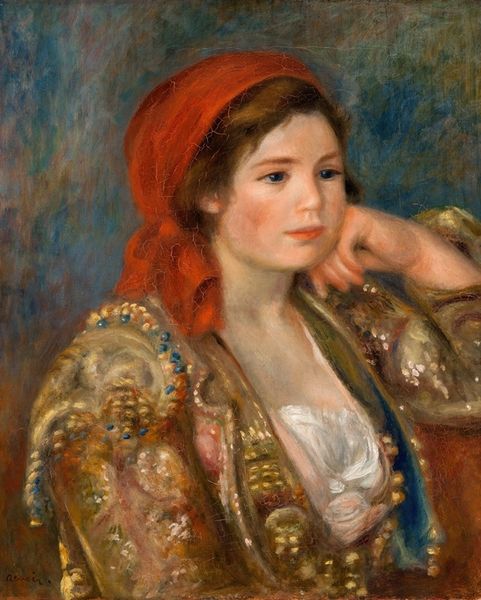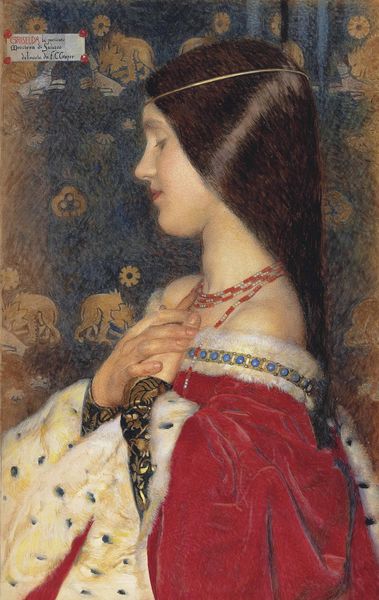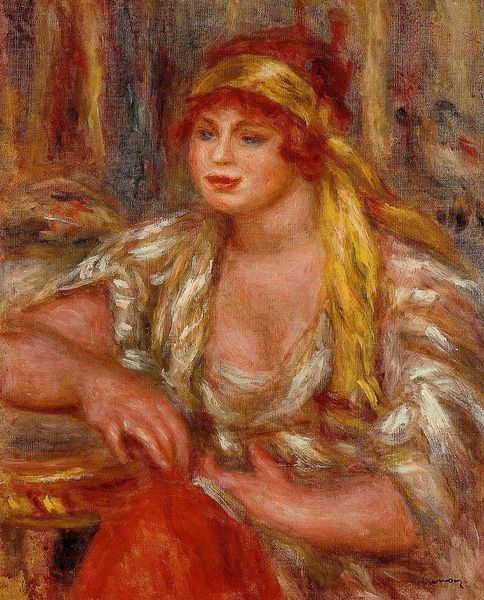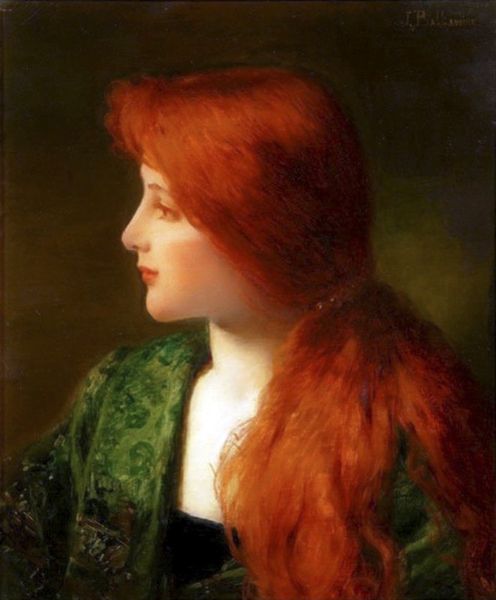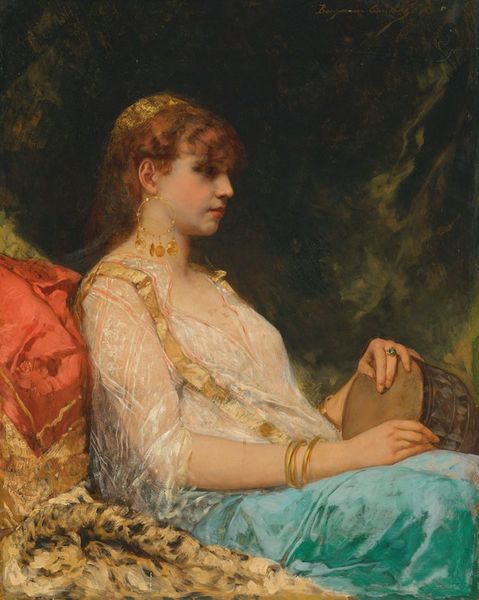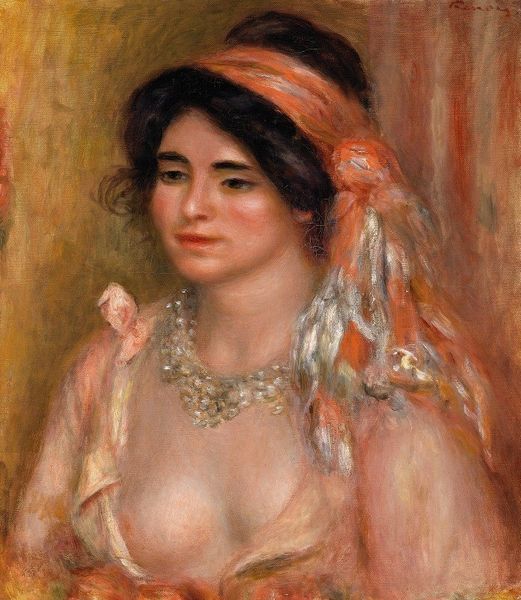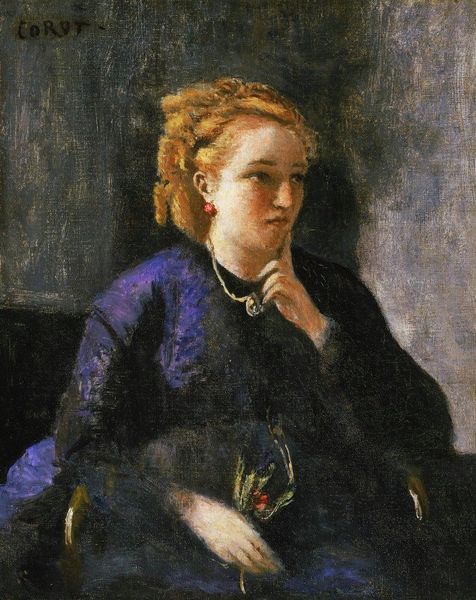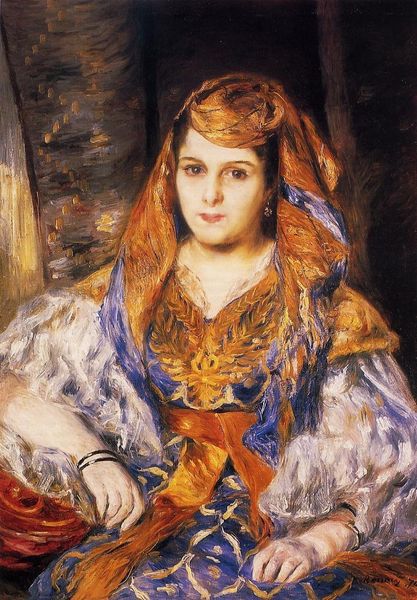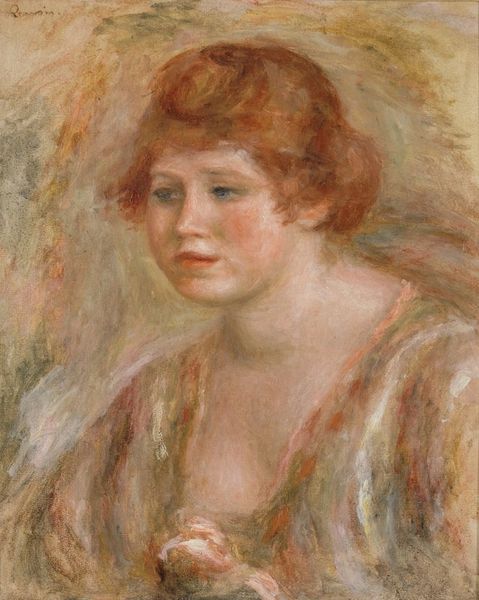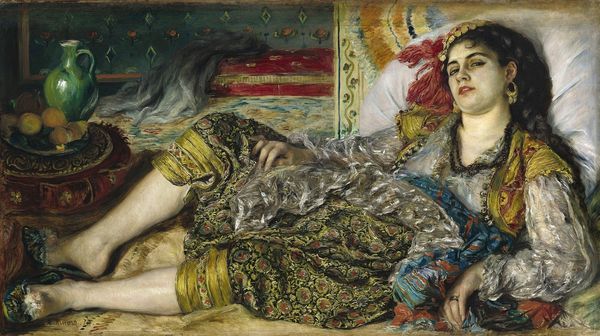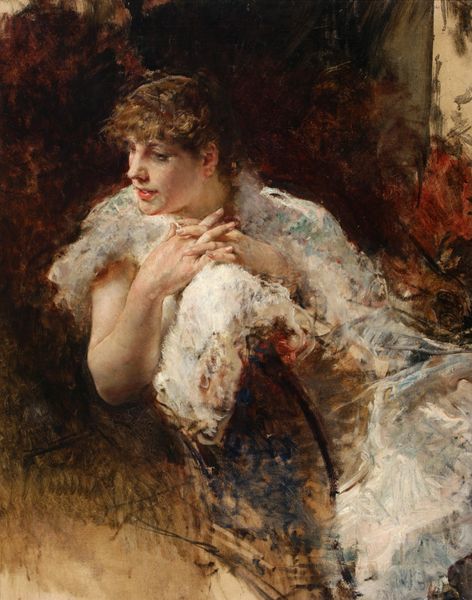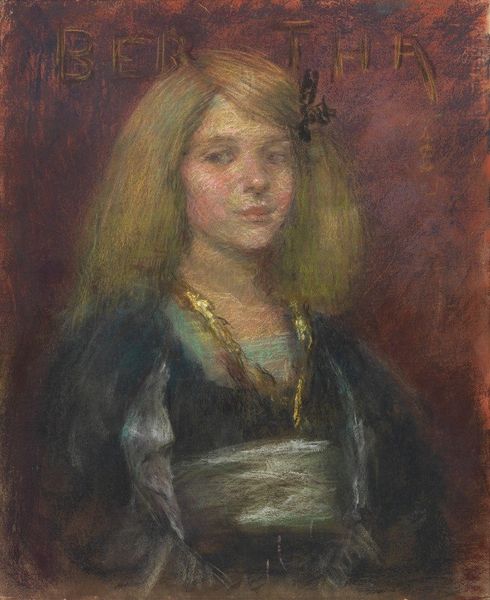
Dimensions: 32.7 x 41.2 cm
Copyright: Public domain
Curator: Pierre-Auguste Renoir painted this portrait, entitled "Odalisque," in 1895. It currently resides in a private collection. Editor: It's so… plush. The textures just leap out, don't they? You can almost feel the weight of that embroidered jacket and the softness of her skin. Curator: Renoir often explored orientalist themes, which were popular in late 19th-century Europe. The "odalisque" was a recurring trope—often depicted as a member of a Turkish harem. The painting participates in and perpetuates that trope. Editor: I see your point. But the labor involved in making her clothes…the stitching, the dyeing, and the weaving that produces the clothing she has on speaks volumes about global trade and its colonial legacies. How are textiles employed as a tool in artistic cultural conversations? Curator: Well, the setting certainly contributes to the overall atmosphere of exoticism. The muted background throws the viewer's focus onto her costuming and gaze, turning the woman into an object of European interest, and that brings with it ethical concerns about power and representation. Editor: Representation indeed. Consider that Renoir employs brushstrokes, that while subtle are clearly visible, which brings to my attention a focus not just on what's presented but HOW it's presented, and thus encourages a critical gaze by the spectator of the textile materials involved. I see materiality itself used as a vehicle for engaging viewers on multiple fronts, and this contributes in shifting audience consumption habits through art appreciation, rather than pure historical admiration for 'exoticism'. Curator: It is undeniable that he presents to us masterful use of his materials in his technique. What is more difficult to assess are the nuances of the reception this kind of subject received back in the nineteenth century as it speaks volumes about contemporary prejudices and historical realities. Editor: Absolutely. And in viewing art, this reminds us of material considerations, the process, and global realities when looking at a piece of art. Curator: Ultimately, pieces like these encourage necessary conversation around art history. Editor: Agreed, that ultimately broadens and enriches any viewer's comprehension.
Comments
No comments
Be the first to comment and join the conversation on the ultimate creative platform.
